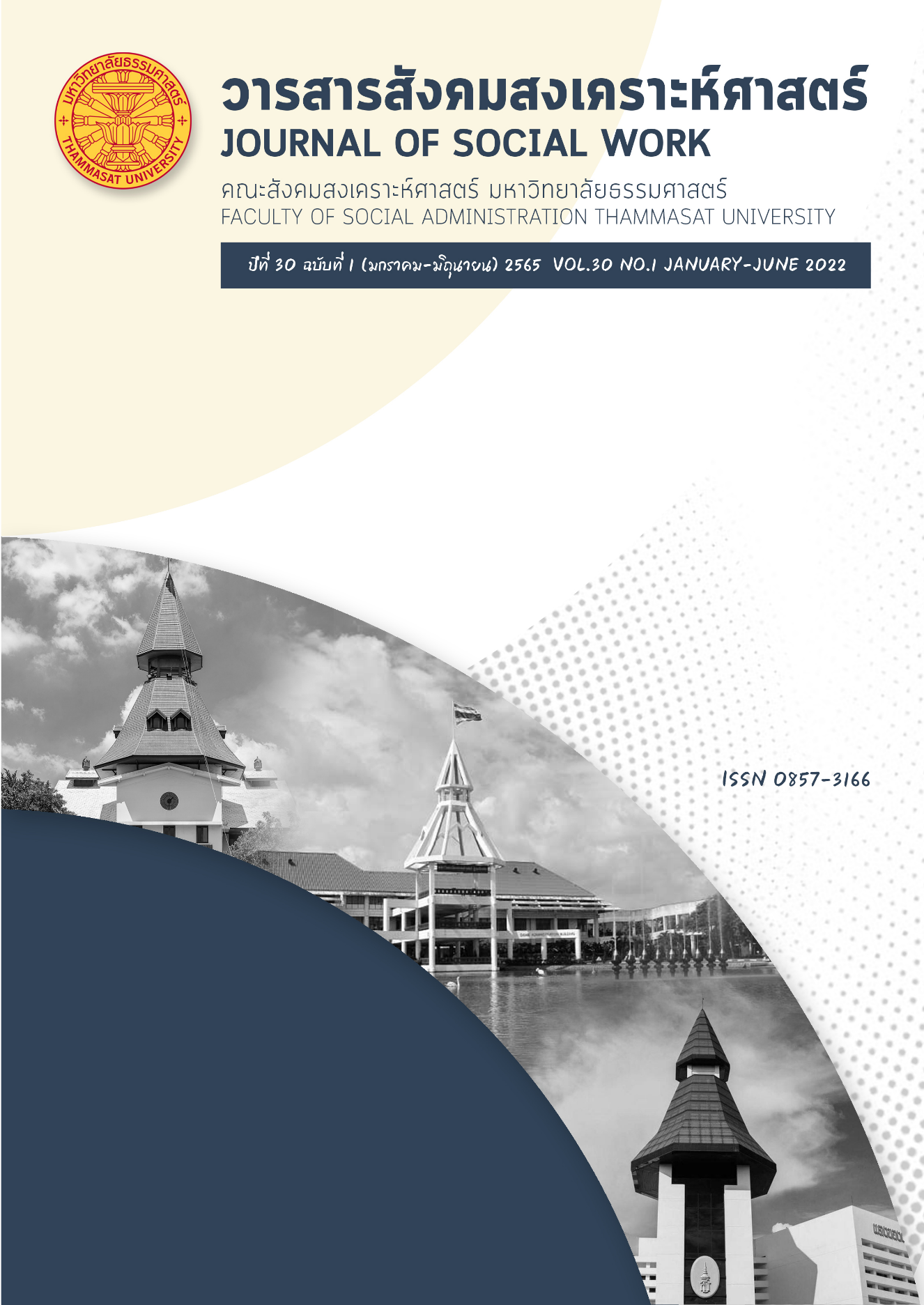Policy Recommendations on the Guidelines of Custodial Measures for "Watch List"
Keywords:
Policy Recommendations on the Guidelines, Watch ListAbstract
The purpose of this thesis is to examine how to provide a definition of the term “Watch List” and establish measures to classify the term “Watch List” in Thailand in order to recommend approaches on the development of the treatment of “Watch List”. A qualitative approach is selected as research method, through the use of documentary analysis and in-depth interview.
The research findings indicate that the definition of the term “Watch List” is a group of prisoners who exhibit violent criminal behavior that can inflict harms on victims, injured persons, and society. The violent criminal behavior these prisoners exhibit include child sexual abuse and rape, rape and murder or a third-degree rape, serial killer, born criminal, violent offences recidivism, mental criminal, and violent criminal (Pedicide/Mass murder). The findings also point out that there should be measures and approaches on the specific treatments of these prisoners, which must be different from other prisoners. These measures and approaches are crucial as they can be used as criminal precautions and can prevent negative consequences that may be affected by the repeated offences. To successfully establish such measures and approaches, the executives who strongly focus on improving factors contributing to this establishment, which are an enactment of specific law, an establishment of explicit guidelines, and a cooperation between related sub-organizations in the criminal justice system, must assure full support.
References
กรมราชทัณฑ์. (2561). คู่มือการจัดโปรแกรมการแก้ไขฟื้นฟูผู้ต้องขังตามลักษณะแห่งคดีและพฤติการณ์การกระทำผิด. กรุงเทพฯ: โรงพิมพ์ราชทัณฑ์.
กรมราชทัณฑ์. (2562ก). หนังสือประทับตราการประเมินตามแบบจำแนกลักษณะผู้ต้องขัง. นนทบุรี: ผู้แต่ง.
กรมราชทัณฑ์. (2562ข). ประกาศกรมราชทัณฑ์ เรื่องหลักเกณฑ์การพักการลงโทษ พ.ศ. 2562. นนทบุรี: ผู้แต่ง.
กรมราชทัณฑ์ . (2563). จำนวนผู้ต้องขัง. กรุงเทพฯ: โรงพิมพ์ราชทัณฑ์.
กัญญ์ฐิตา ศรีภา. (2562). จิตวิทยาอาชญากรรมการวิเคราะห์พฤติกรรมอาชญากรรม ความผิดปกติทางจิตและฆาตกรรม. นครปฐม: ภูมิการพิมพ์.
จอมเดช ตรีเมฆ. (2561). CRIMINOLOGY. ปทุมธานี: สำนักพิมพ์มหาวิทยาลัยรังสิต.
นัทธี จิตสว่าง. (ม.ป.ป.). หลักทัณฑวิทยา: หลักวิเคราะห์ระบบงานราชทัณฑ์
(พิมพ์ครั้งที่ 3). กรุงเทพฯ: มูลนิธิพิบูลสงเคราะห์ กรมราชทัณฑ์.
นัทธี จิตสว่าง. (2564). ควรติด EM ที่ “ใจ” ของผู้ต้องขังกลุ่มคดีร้ายแรง 7 ประเภท (Watch List). สืบค้นจาก https://www.chulacriminology.com/index.html
พรชัย ขันตี, ธัชชัย ปิตะนีละบุตร และ อัศวิน วัฒนวิบูลย์. (2543). ทฤษฎี และงานวิจัยทางอาชญาวิทยา. กรุงเทพฯ: บุ๊คเน็ท.
พรชัย ขันตี, จอมเดช ตรีเมฆ และ กฤษณพงศ์ พูตระกูล. (2558). ทฤษฎีอาชญาวิทยา: หลักการ งานวิจัย และนโยบายประยุกต์. กรุงเทพฯ: ส.เจริญการพิมพ์.
เพลินใจ แต้เกษม และคณะ. (2556). การจัดทำมาตรการในการแก้ไขและบำบัดฟื้นฟูผู้ต้องขังในเขตควบคุมพิเศษ. กรุงเทพฯ: บพิธการพิมพ์.
สฤษดิ์ สืบพงษ์ศิริ. (2560). แผนประทุษกรรมกับลายเซ็นอาชญากรรมของคนร้าย: ความเหมือนที่แตกต่าง. วารสารวิชาการอาชญาวิทยาและนิติวิทยาศาสตร์, 3(2), 37-52.
เอกมล ลวดลาย. (2563). มาตรการที่มีประสิทธิภาพในการปฏิบัติต่อผู้กระทำผิดคดีร้ายแรงที่มีลักษณะสะเทือนขวัญ. สำนักงานกิจการยุติธรรม กระทรวงยุติธรรม.
Abuza, Z. (2009). The rehabilitation of Jemaah Islamiyah detainees in South East Asia: A preliminary assessment. In T. Bjørgo and J. Horgan (Eds.), Leaving terrorism behind: Individual and collective disengagement (pp. 193-211). New York: Routledge.
Austin, J. and McGinnis, K. (2004). Classification of high-risk and special management prisoners a national assessment of current practices. Retrieved from file:///C:/Users/ZZZ/Downloads/451773%20(2).pdf
Australian Institute of Criminology. (2003). In Crime Reduction that matters. Retrieved from https://aic.gov.au/publications/crm/crm001
Australian Institute of Criminology. (2017). Crime Prevention Approaches: Theory and Mechanisms. Retrieved from https://aic.gov.au/publications/rpp/rpp120/crime-prevention-approaches-theory-and-mechanisms
Beccaria, C., and Voltaire. (1770). An essay on crimes and punishments. London: F. Newbery.
Becker, H. S. (1963). Outsiders: Studies in the Sociology of Deviance. New York: Free Press.
Bentham, J. (1970). An Introduction to Principle of Morals and Legislation, in J.H. Burns & H.LA. Hart, eds. The Collected Works of Jeremy Bentham. London: Athlone Press.
Bjorgo, T., Horgan, J., (eds). (2009). Leaving Terrorism Behind: Individual and Collective Disengagement. New York: Routledge.
Ferri, E. (1884). Criminal Sociology. New York: Agathon Press.
Hirschi, T. (1969). Causes of Delinquency. Berkeley, CA.: University of California Press.
Fox, J. A., & Levin, J. (2005). Extreme killing: Understanding serial and mass murder. Thousand Oaks, CA: Sage
Justice Inspector of Custodial Services. (2015). Lifers: classification and regression. Retrieved from http://www.custodialinspector.justice.nsw. gov.au/Documents/Lifers%20Classification%20and%20regression.pdf
Law Revision Commissioner. (2008). The penal code and subsidiary legislation. Retrieved from http://agc.gov.ms/wp-content/ uploads/2010/02/penal_code.pdf
Lombroso, C. (1911). Criminal man. New York: Putnam.
Office for National Statistics. (2018). The nature of violent crime in England and Wales: year ending March 2018. Retrieved from https://www.ons.gov.uk/releases/thenatureofviolentcrimeinenglan dandwalesyearendingmarch2018
Sutherland, E. H. (1947). Principles of Criminology (4th ed.). Philadelphia: Lippincott.
Thailand Institute of Justice (TIJ). (2017). A comparative study of treatment of prisoners and non-custodial Measures in ASEAN. Retrieved from https://knowledge.tijthailand.org/en/ publication/detail/36#book/
United Nations Educational, Scientific and Cultural Organization. (2016). A Teacher’s Guide on the Prevention of VIOLENT EXTREMISM. Retrieved from https://en.unesco.org/ sites/default/files/lala_0.pdf
United Nations. (2016). Handbook on the management of high-risk prisoners. Retrieved from file:///C:/Users/ZZZ/Downloads/ HB_on_High_Risk_Prisoners_Ebook_appr%20(1).pdf
Downloads
Published
How to Cite
Issue
Section
License
Copyright (c) 2022 Journal of Social Work

This work is licensed under a Creative Commons Attribution-NonCommercial-NoDerivatives 4.0 International License.
The manuscripts published in the Social Work Journal is the copyright of the Social Work Journal, Thammasat University
Any article or opinion appeared in the Social Work Journal will solely be under the responsibility of the author The Faculty of Social Administration, Thammasat University and the editors do not need to reach in agreement or hold any responsibility.



